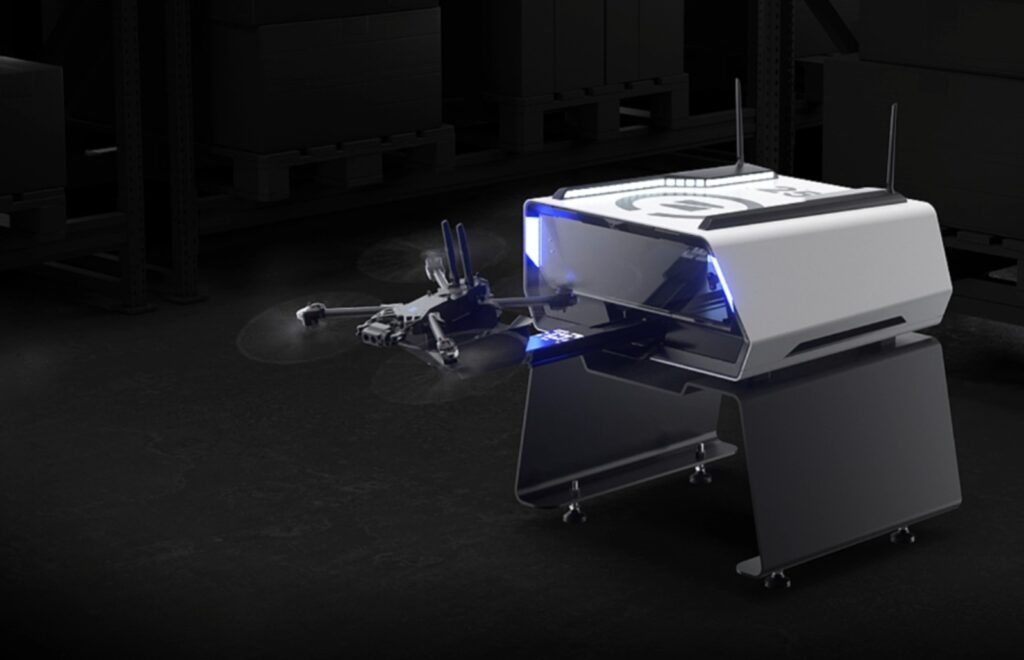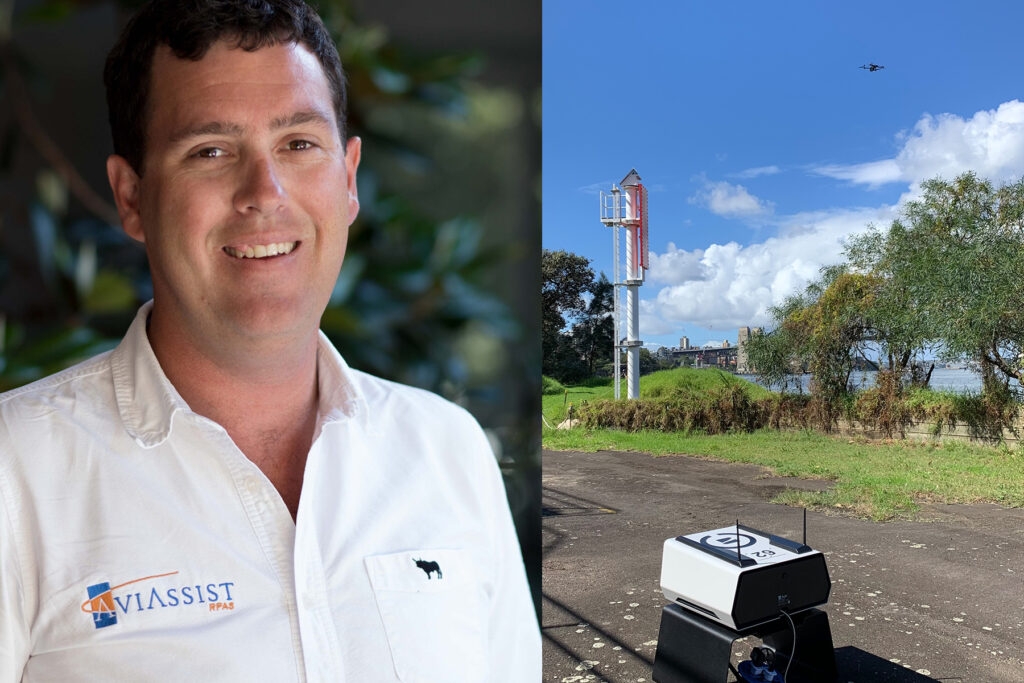Skydio is a drone maker from San Mateo, California and for the first time in Australia, their AI-enabled drone has taken flight from a futuristic docking station, known as the Skydio Dock.
The Skydio Dock is currently only available to early-access partners, but has already made its way to Australia already. The demonstration was done by Aviassist, part of training by Australian RPAS (Remotely Piloted Aircraft Systems ) during the recent Sydney Dialogue summit which showcases new technologies.
The flight was significant, as this was the first time the innovative Skydio Dock has been seen and used in Australia, an ultra-smart docking station that all but controls the drone itself.
Rather than manage a drone, and then take it to site each time you want to fly, the Skydio Dock is designed to be installed in place and ‘live on site so you don’t have to’. Assuming you have power and connectivity, the drone can fly without human intervention.
Through connected software, you send a mission (flight path) to the drone (this can be scheduled for repeat work), the Dock’s front door opens, where the drone is moved out of the housing, thanks toa robotic arm, to allow the props space to rotate freely.
The drone then autonomously takes flight to carry out the mission. With a couple of serious antennas on the dock, the drone can fly as far as 5 kilometres and return for charging when complete.
This is expected to have applications in industries that require repetitive flight paths, simplifying drone tasks in agriculture, mining and transport, among other industries. The drone has the ability to align itself on the catching arm and is said to have as much as 99% reliability.
The frame is strong but lightweight, made of industrial-grade aluminium, while also being waterproof, providing IP56-grade protection from the elements. Naturally, you’re going to fly while it’s raining, but when the weather clears up, the drone is ready to get to work.
An individual can monitor the drone’s stream, but it’s not necessary and can be done from anywhere in the world.
The drone’s mission was to capture the picturesque Goat Island in Sydney Harbour and
navigate itself around buildings and pylons before detecting the Harbour Bridge in the
foreground.

Ross Anderson from Aviassist says he’s not surprised drones can now fly with almost no
human involvement.


It was only a matter of time. The drone was able to work out there were certain structures in the area and fly around them, It’s not autopilot, it’s AI. It was the drone summing up its surroundings and saying to itself, ‘hey, I can fly here, I can’t fly there’.
Ross Anderson from Aviassist
A great example is bridge and infrastructure inspections – it’s dangerous for someone to be climbing that high up and even with drones being flown by someone on the ground, they’re always prone to crashing as a result of human error.
A drone that can fly itself would make less mistakes than a person and that raises the safety bar.
Drones have been flown remotely and beyond visual line of sight for a while but this
takes it to the next level.
It is likely that we will see companies in transport and mining deploy this technology, and unsurprisingly, the Australian Defense Force (ADF), is already some of Skydio’s clients.
In the event of a car crash, an AI-enabled drone could quickly fly over and survey the scene and relay critical information to first responders as they do their much more important job, which is helping the people involved.
